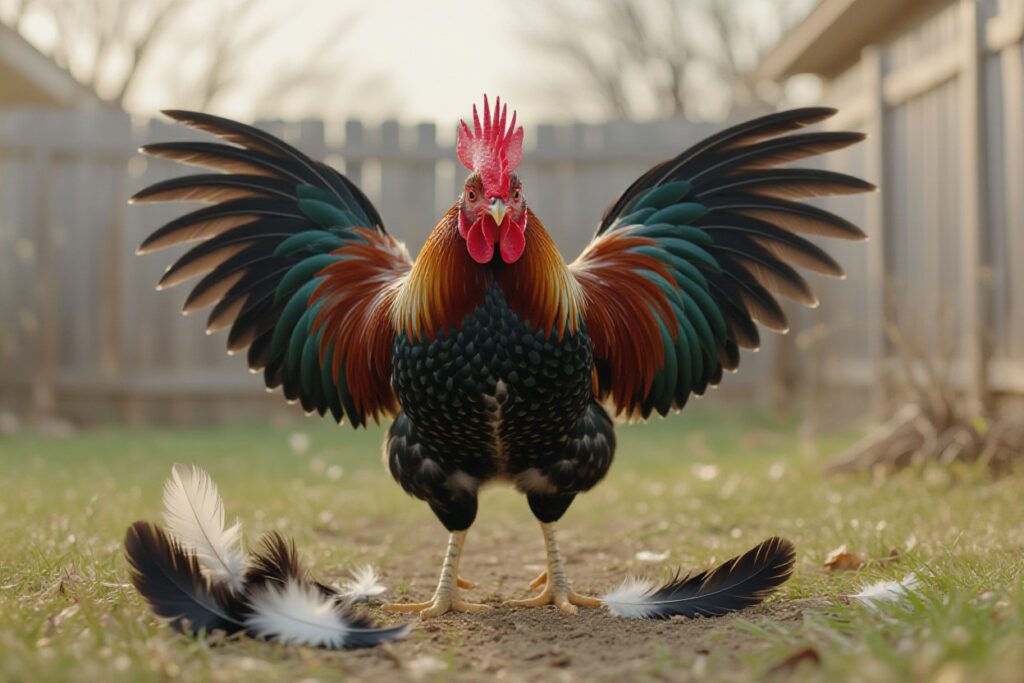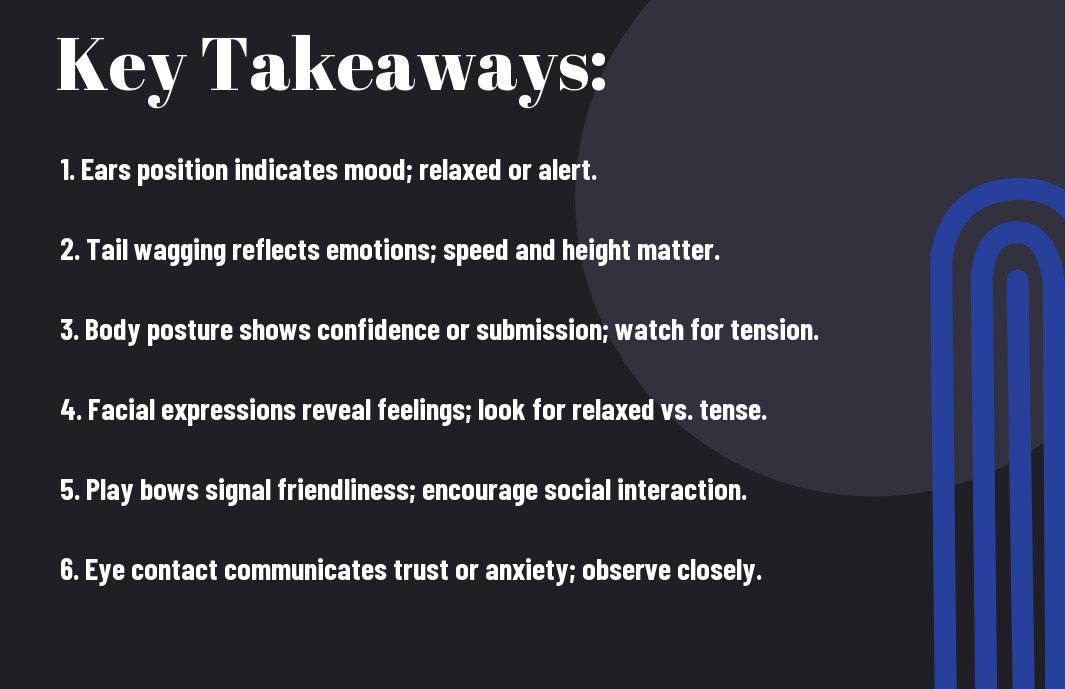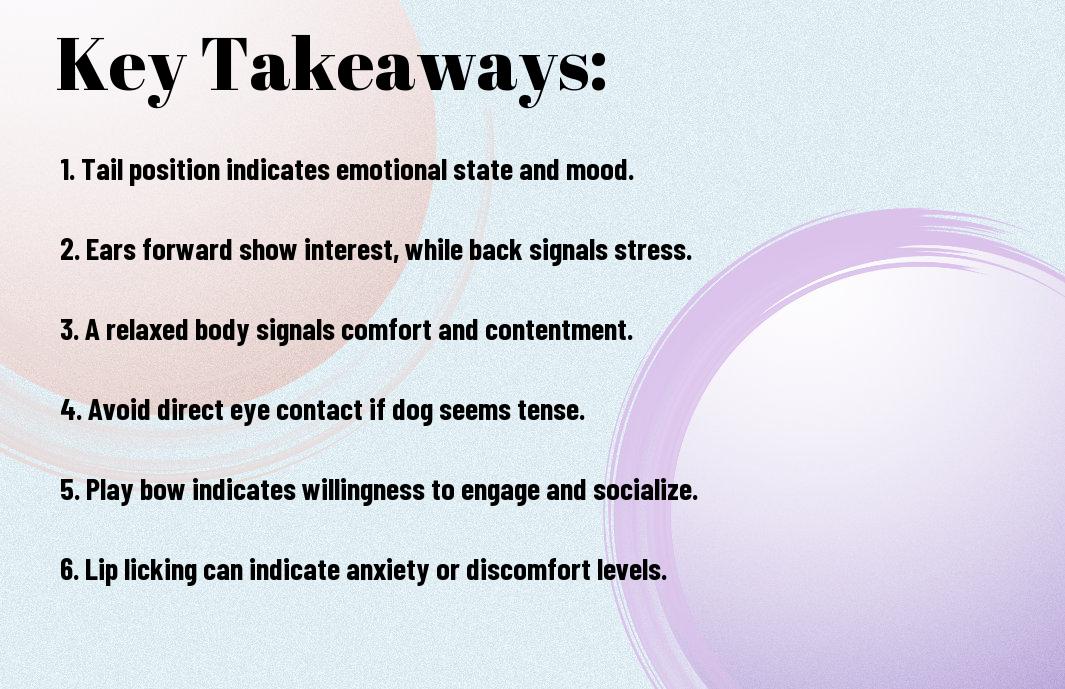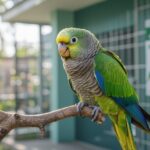Many roosters communicate constantly through posture, feathering, and sound, so when you study rooster body language you’ll learn to spot aggressive postures, courtship displays, and submissive behaviors early; noticing alert stances, tail and wing movements, or comb color changes helps you read mood and keep safe around roosters, while recognizing comfort behaviors reveals trust and positive social bonds that improve your handling and management.
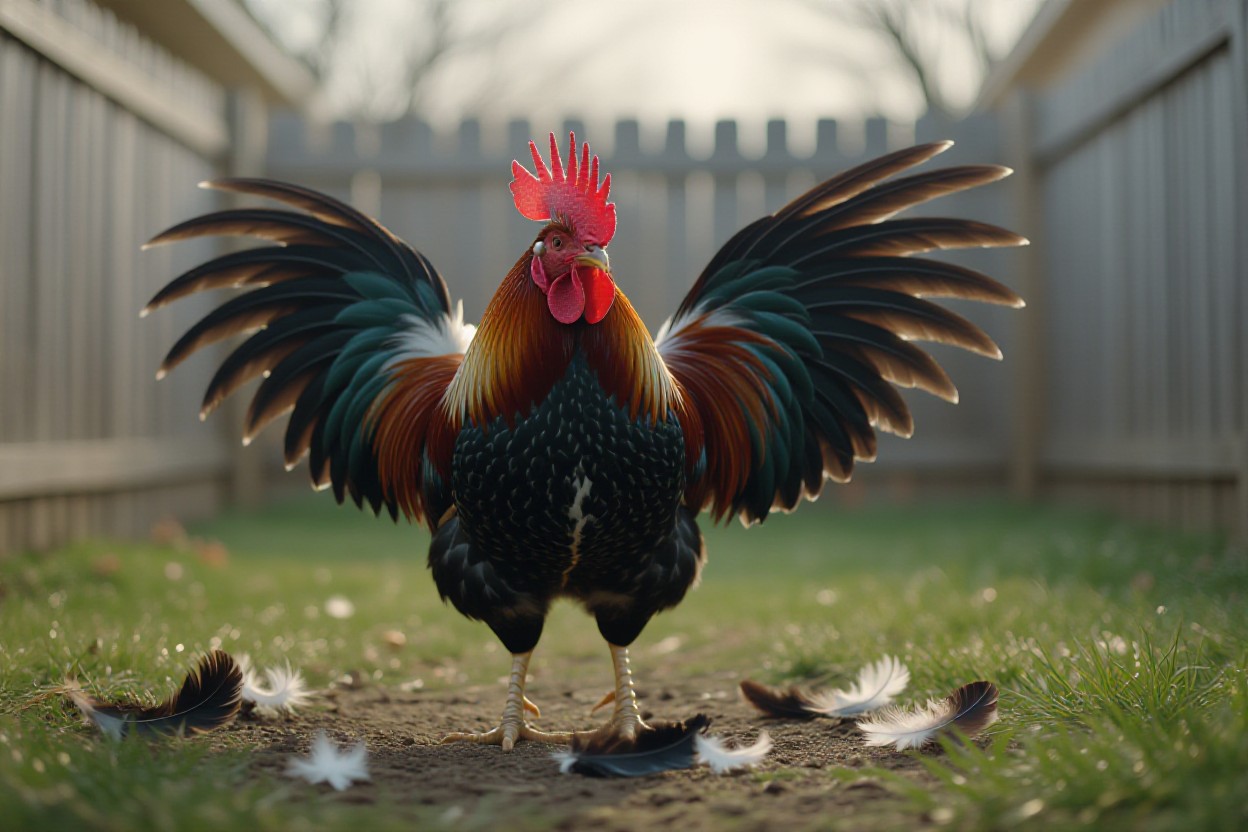
Aggressive Behaviors
Identifying Signs of Aggression
Watch for a shift in rooster body language where he leans forward, neck feathers rise, and tail fans while giving 1–3 short, sharp clucks; these often precede a lunge. You’ll also notice direct eye contact, repeated circling, and visible spurs aimed at your legs. If he stomps, wings drop, or his comb darkens, treat those as dangerous escalation signals and increase distance immediately.
Managing Aggressive Rooster Behavior
Start by isolating the bird for 24–72 hours to break the immediate pattern, then reintroduce him gradually with supervised, short interactions. You should reduce triggers like hand-feeding and overcrowding, provide at least one extra perch per hen, and limit daylight to manageable levels to lower hormonal drive. Use barriers and firm, consistent responses to teach boundaries.
For deeper management, implement a stepwise plan: first, assess triggers (age, flock size, breeding season—aggression often peaks in spring), then apply environmental fixes such as increasing space to at least 4 sq ft per bird in run areas and adding visual barriers between birds. Train using short, predictable routines—approach calmly, present a long object (broom) to create distance rather than sudden movements, and reward non-aggressive responses with treats only when he stays calm. In one yard with 8 hens, isolating a dominant 3-year-old for 48 hours and reintroducing him with staggered supervised visits cut chasing incidents by roughly 80% in two weeks; if behavior persists, consult an experienced handler to trim spurs or consider rehoming for safety.
Courtship & Mating Display
Often courtship in rooster body language is a sequence of precise signals: tidbitting, wing-dropping, low clucks and a brisk strut that can last 10–60 seconds; you’ll notice the rooster offering food and circling the hen to gain access. During peak hours (dawn to mid-morning) these displays repeat several times per hour, and you should watch comb color, tail carriage and wing posture to gauge intent and safety.
Courtship Rituals
Tidbitting—where he picks up and drops small food items while calling—is a primary invitation; you’ll see wing-dropping and a short sideways waltz that signals attraction and possession. Females often respond by crouching and fluffing their vent feathers; you should note that a calm, repeated ritual with food offering is a positive bonding cue and often precedes successful pairing.
Understanding Mating Behavior
Mounting is brief—typically a few seconds of cloacal contact—and roosters may attempt copulation repeatedly throughout the day; you should follow the guideline of about 1 rooster per 8–12 hens to avoid overmating. Watch for raised tails, lowered wings and persistent pursuit; if hens show torn feathers or bleeding, that signals a dangerous level of aggression requiring intervention.
Inexperienced males often claw or misbalance during mating, increasing injury risk to hens, so monitor young roosters closely. Hens can store sperm for about 7–10 days, meaning one successful mating can fertilize multiple subsequent eggs. If you see a bright red comb and rapid circling, expect imminent mounting and provide escape routes or supervision to protect hens from repeated rough matings.
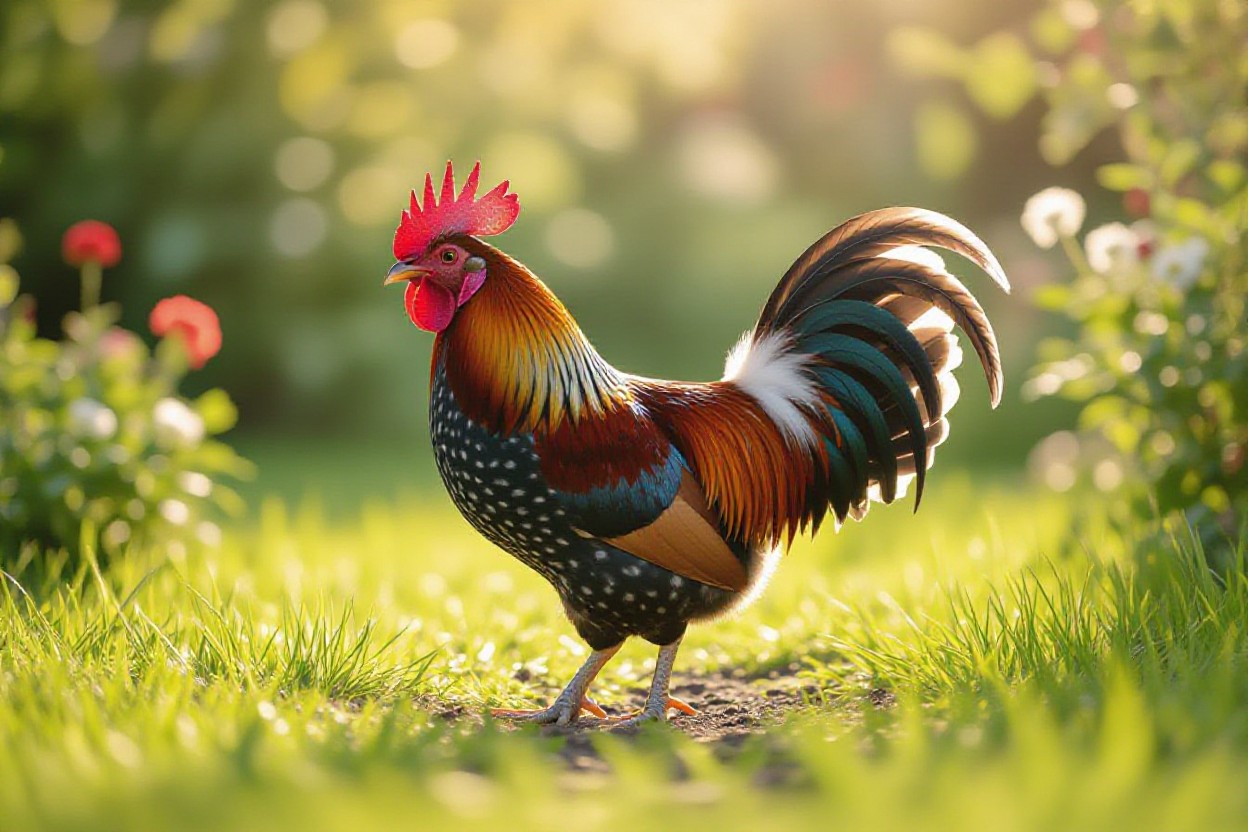
Comfort & Contentment
You’ll spot comfort in small, repeated behaviors: relaxed roosting, frequent preening, and regular dust baths. Watch for soft clucking, a slightly fluffed appearance, and tails held loosely—clear signals in rooster body language that your bird is content. Conversely, pale combs or sudden withdrawal signal stress or illness and should be addressed immediately. In backyard flocks, assessing these cues daily helps you maintain safety and welfare while scaling behavior guidance for perfect CTR and practical application.
Signs of a Happy Rooster
Look for consistent, calm actions: soft clucks, deliberate preening 2–4 times daily, steady foraging, and relaxed tail/wing positions. You’ll notice playful chasing of dust clouds and comfortable spacing near hens; a content rooster often sleeps with feathers slightly fluffed and a bright, firm comb. If he sings consistently at dawn without pacing or aggression, his rooster body language is positive and indicates low stress and good social balance.
Creating a Comfortable Environment
Provide at least 4 sq ft of coop space per bird and 10 sq ft per bird in a run, plus 1 rooster per 8–12 hens to reduce competition. You should supply clean dry bedding, 2–4 inch-wide perches, and a dust bath area used 1–2 times weekly. Adequate ventilation, predator-proofing, and shaded spots keep temperatures moderate and support calm rooster body language.
Implement a cleaning schedule: you can do spot-cleaning daily, full bedding change monthly, and disinfecting between flocks. Offer variety in substrate—sand for dust baths, straw in nesting—and maintain 12–14 hours of natural or supplemental light during shorter days to stabilize routines. In one small-scale case, a six-bird flock showed reduced pecking and more relaxed postures within two weeks after adding a shaded dust bath and extra perch space.
Alert & Protective Postures
When a rooster shifts from relaxed to vigilant you’ll see him stand taller, neck extended, hackles slightly raised and tail fanned; his comb may flush brighter as blood flow increases. He often freezes with a fixed stare and emits a short alarm call before escalating. Raised hackles and a direct stare signal high alert, while a sudden forward movement after warnings signals possible attack — many roosters escalate when an intruder crosses roughly 1–2 meters.
Recognizing Alertness
You’ll spot alertness through a sharp head tilt, narrowed eyes and a brief pause in activity as he locks onto the stimulus. Calls become staccato clucks or a single sharp crow within seconds, and weight shifts forward or a one-foot freeze indicate intent. If he resumes preening or foraging the threat level is low; if he keeps eye contact and lowers his head, treat that as a warning sign.
Protective Behaviors Explained
Protective roosters commonly interpose themselves between you and hens, circle perceived threats, or issue loud rally calls to mobilize the flock. You may see wing-spreading to appear larger and short charges under 1 meter to push intruders away. Positive protection looks like herding and vocal direction; dangerous protection includes repeated lunges, spur strikes, or pinning a bird. These behaviors intensify during brood-rearing and peak displays.
Specifically, if he positions himself between you and chicks or pecks at your shoes he’s testing boundaries and trying to herd the flock; stepping back usually calms him. Conversely, a rooster that crouches, fans wings, follows persistently and shows exposed spurs is displaying aggressive defense — keep distance and move hens to shelter. Breeder observations note protection is strongest when chicks are under two months old and around dusk when predators are most active.
Communication through Sounds
Different Vocalizations
You’ll notice roosters use roughly 24–30 distinct vocalizations: the long crow for territory and mate attraction, the short sharp alarm “kak” for threats, the soft purr or cluck when content, the tidbitting call males use to entice hens to food, and the cackle after a hen lays. Roosters can crow in bursts of 3–10 calls, give single-syllable aerial alarms or repeated ground alarms, and emit low guttural sounds before aggressive displays.
What the Sounds Mean
When you hear a rooster crow, he’s signaling territory and often asserting dominance to other roosters or hens. A rapid, sharp alarm call means immediate danger—airborne predators cause short, high calls while ground threats trigger repetitive alarms and scramble behavior. Tidbitting signals positive social bonding and food discovery, whereas low, rumbling growls usually precede an aggressive posture toward you or another bird.
In practice, if your rooster gives a sudden repeated alarm, watch for hawks or foxes and move your flock to cover within seconds; tidbitting commonly precedes mating displays and attracts hens, so use that call to read social dynamics. Spotting a pattern—like crowing spikes at dawn or before confrontations—helps you predict and manage dangerous encounters and encourage positive behaviors.
Interpreting Rooster Body Language
When you read rooster body language, prioritize clear, repeatable signals: a forward-leaning bird with raised feathers and loud, staccato clucks is signaling intent, while a low-crouched bird with flattened comb is deferring. Watch sequences—tail elevation followed by wing-pumping often precedes courtship; repeated short charges from 1–2 meters usually escalate to a direct attack. Use these patterns to predict behavior and adjust your distance accordingly.
Body Posture and Movement
You will note posture changes signal mood fast: a straight, tall stance with chest puffed and hackles up shows dominance; a side-to-side strut with slow steps and rhythmic tail bobs is courtship, often lasting 5–20 seconds; a low, flattened body and tucked head indicate submission. If the rooster shifts weight onto the toes and leans forward, interpret it as a potential approach and give space.
Understanding Tail and Wing Positioning
Tails held high and fanned signal dominance or courtship, while a tail tucked close to the body usually means fear or avoidance. Wings slightly dropped to expose the flank are a comfort behavior; fully spread wings combined with puffed feathers amplify size in threat displays. You should monitor tail angle—wide fanning (about 60–90°) often precedes mating or display behaviors.
Delving deeper, pay attention to combinations: a high, fanned tail plus forward-leaning and visible spurs is a high-risk aggressive mix—back away beyond 2 meters if you see repeated approaches. Conversely, a tail-half-raised with soft wing drags signals contentment and social grooming opportunities. In multi-rooster pens, tail-raising frequency correlates with rank contests; the bird that raises and maintains tail height longest typically wins the encounter.
Final Words
So you can interpret rooster body language to keep your flock and people safe; by noting aggressive postures, courtship displays, submissive and alert stances, tail and wing positions, and comb color shifts you improve handling and predict behavior; observe consistently, give space when a rooster signals stress or dominance, reinforce calm behaviors, and use knowledge to reduce risk and foster confident, healthy birds.
FAQ
Q: What are the key signs of aggression or alertness in rooster body language, and how can I distinguish a genuine threat from routine vigilance?
A: Understanding rooster body language begins with observing baseline behavior for the individual bird, then comparing deviations. Roosters display aggression and alertness through a combination of posture, feather position, head and neck movements, vocalizations, and eye/comb changes. Aggressive postures tend to be amplified: the bird stands tall with neck and hackles (neck feathers) extended, tail held high and fanned or stiff, and wings slightly dropped or held away from the body to look larger. A common aggressive stance is the “freeze-and-stare” — the rooster locks onto the perceived threat with a fixed gaze, body weight shifted forward onto the toes, and occasional short, sharp forward lunges. Wing movements may include small flicks or full-extended wing flaps used to intimidate or to prepare for a charge. Tail positions in aggression are often erect, fanned, and rigid; the tail may quiver as the bird readies itself.
Alert stances share some visual cues but are generally less intense. An alert rooster will stand upright, neck extended, eyes wide and scanning, with comb and wattles possibly brighter as blood flow shifts with arousal. Feathers remain relatively sleek rather than aggressively puffed. The bird frequently rotates its head, listening and visually assessing the environment. Vocalizations for alertness include clipped calls or short, sharp clucks that differ from the prolonged alarm call used to signal predators. Context helps differentiate: alertness is often triggered by novel stimuli such as a sudden movement or sound, and the rooster may return to normal behavior once the stimulus is assessed. Aggression is sustained, more directed toward a person or animal, and often escalates if the perceived challenger approaches.
Comb color and facial signs are subtle but informative. A healthy, calm rooster has a steady comb color; when aroused, the comb and wattles can darken or pulse as circulation changes. A pale or bluish comb can signal stress or reduced circulation and may accompany intense fear rather than outright aggression. Eye dilation and a hard stare indicate focused attention and possible escalation. Vocal signs are important: aggressive birds may emit loud, repeated crows or a deep, resonant “kaaa” sound combined with wing slapping; while alarm calls for predators are higher-pitched and rapid.
Read patterns over time: a rooster that routinely adopts dominating stances toward flockmates or humans is more likely to act aggressively. Consider triggers — resource guarding (feed, hens, perches), protecting chicks, or asserting dominance at breeding time often precede aggressive acts. Physical actions to watch for include slow stalking movements, backward half-steps before lunging, and the bird’s use of spurs. Safety-conscious handling means maintaining distance when a rooster displays these signs, using barriers if necessary, and avoiding direct eye-to-eye confrontations which can be perceived as challenges. If a threat seems imminent, move slowly, don’t make sudden flights toward the bird, and allow escape routes so the rooster doesn’t feel trapped.
Q: What typical courtship, submissive, and comfort behaviors should I look for to accurately interpret rooster body language during social interactions?
A: Courtship displays, submissive behaviors, and comfort actions are vital categories in rooster body language that reveal social structure and mood. Courtship is often a conspicuous, ritualized set of behaviors directed at hens. Typical displays include the “tidbitting” or food-offer dance — short runs with head bobbing, series of soft clucks, and dropping the wings slightly while presenting the neck and back feathers. Roosters will also perform a “strutting” display: feathers smoothed, tail fanned high with rhythmic side-to-side stepping, low vocalizations and soft coos, and wing dragging or slight wing spreading. These displays signal intent to mate and attempt to attract and reassure hens. Gentle courtship usually allows hens to lead the interaction; if a hen walks away repeatedly, the rooster pauses and may try less abruptly. In contrast, forceful mounting is often preceded by more intense chasing, loud crowing, and flattened wing use; observe the hen’s responses to assess consent and welfare.
Submissive behaviors among flockmates are important to maintain hierarchy and reduce conflict. A submissive bird will lower its head and neck, crouch or fully flatten itself to the ground, tuck the tail, close eyes slightly, or make soft, appeasing clucks. Often the submissive bird exposes its neck or turns its back, signaling it accepts the dominant bird’s position. You may also see “avoidance” behaviors like stepping aside, retreating to the coop, or seeking shelter. Submissive postures are typically accompanied by non-threatening vocalizations and a lack of feather ruffling. Note that repeated severe submissive responses or avoidance around a particular rooster can indicate bullying, which needs management for welfare and safety.
Comfort behaviors show a relaxed, secure bird and provide a contrast to courtship and submission. These include preening, dust bathing, wing stretching, leg stretches, and short dozing with the head tucked into the back or under the wing. During comfort displays, feathers are relaxed and smooth, breathing is regular, and the comb color is stable. Tail positions during comfort are neutral — slightly lowered or relaxed rather than rigid. Wing movements are slow, full stretches or small wing flicks to realign feathers during preening. Gentle vocalizations like soft clucks, coos, or contented purrs accompany these behaviors. Observing frequency and timing helps: dust bathing and preening increase after foraging and when the bird feels secure, while courtship displays peak around breeding times or when hens are fertile.
Interpreting mixed signals depends on context and sequencing. For example, a rooster may show a quick courtship strut then switch to an alert posture if another rooster enters, or begin comfort behaviors after successful mating. Close observation across different times of day and situations clarifies the bird’s typical patterns and reduces misinterpretation. For handlers, identifying courtship versus aggressive pursuit is important for hen welfare: allow space during consensual displays, separate if behavior becomes coercive, and provide hiding spots and escape routes for hens during breeding season.
Q: How can I use knowledge of rooster body language to improve safety for people and flock members, and what practical steps reduce risks when a rooster appears agitated?
A: Using rooster body language as a safety tool starts with consistent observation and management strategies tailored to the bird’s signals. First, develop a baseline: spend time noting each rooster’s typical postures, vocalizations, and reactions to common stimuli like visitors, dogs, or farm equipment. This baseline lets you detect early signs of agitation — such as the sudden rise of the hackles, a fixed stare, or a shift to a high, rigid tail — and take preventative action. Many risks can be mitigated by modifying the environment: provide plenty of space, multiple feeding stations, extra perches, and nesting areas to reduce competition; ensure secure fencing and visual barriers so roosters can’t easily see outside threats that trigger persistent alertness; and offer enrichment like dust baths and foraging opportunities to reduce boredom-related aggression.
When a rooster shows clear agitation, use non-confrontational, predictable responses. Avoid direct eye contact or movements that might be taken as challenges. Move slowly and sideways rather than charging or running, which can escalate a chase response. If possible, place a physical barrier between you and the bird — a gate, a large object to walk around, or a closed coop door — and back away. Carrying a lightweight stick or broom can aid in gently redirecting a charging bird without contact by using it to block when necessary; avoid swinging it toward the bird. If the rooster is guarding feed or hens, create an alternative resource area so you can access what you need without passing between the rooster and his perceived prize. For persistent problem roosters, temporary confinement to a separate run during high-risk periods (chick rearing, breeding peak) reduces incidents.
Training and conditioning help reduce future issues. Pair routine human approaches with positive outcomes: feed treats from a consistent, calm routine that associates people with non-threatening benefits. Over time, conditioned calm responses can lower reactive aggression. For more immediate control, use aversive cues that are non-harmful — a sudden hand clap or a firm, sharp noise at a safe distance can interrupt an escalation and give you time to step away. Avoid physical punishment, which often increases fear and unpredictability.
Health checks are part of safety: changes in comb color, drooping posture, or unusual lethargy may indicate illness, which can alter behavior and increase irritability. A pale, bluish, or mottled comb, labored breathing, or a hunched stance warrants prompt veterinary evaluation. Also assess for parasites, injury, or nutritional deficiencies that can change temperament. For multi-rooster flocks, manage social structure by watching for chronic dominance aggression; rehoming or rearranging groups may be necessary if a rooster consistently injures others or humans. When children or unfamiliar visitors are present, keep them at a safe distance and educate them on not approaching roosters directly, not making sudden movements, and offering treats only under supervision.
Finally, plan for escalation: know local options for rehoming aggressive roosters, have protective clothing (long sleeves, gloves, closed-toe shoes) when interacting with high-risk birds, and use secure transport crates if confinement is required. Observing and acting on rooster body language helps you anticipate behavior, intervene early, and maintain safety for both people and flock members without escalating stress for the birds.
